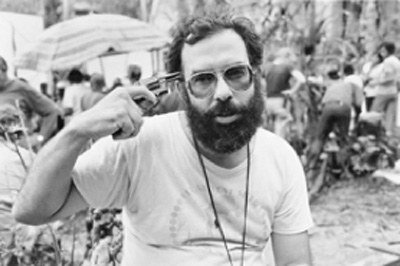16. Jean Renoir (1894 – 1979)

Never did the worlds of art and film collide as closely—or literally—than in the work of Jean Renoir. Employing the same masterful visual stimuli as his father, Auguste Renoir, did in his paintings, Jean Renoir discovered that simple adjustments to lighting, location, focus and camera angle could add new and exciting dimensions to a film. Selling some of his father’s paintings to finance his work, Renoir was a renegade moviemaker—too far ahead of his time to be fully appreciated.
Though he’s best known for Grand Illusion, about a WWI prisoner camp, Renoir’s most powerful work was probably The Rules of the Game, a satirical take on a high-society country weekend, originating the vein in which films like The Celebration and Gosford Park have been created.
Says Slamdance Film Festival founder Peter Baxter: “Renoir is film’s great humanist. His perspective trapped the essence of the real world for the spectator—a human viewpoint that integrated actors, objects and space that expressed the relationship between individuals and society as one mutual tie-in.”
17. Francis Ford Coppola (1939 – )

Though in recent years he seems to have settled comfortably into the role of director-for-hire, in the 1970s, Francis Ford Coppola was responsible for almost single-handedly resurrecting genres that had long been considered dead by Hollywood decision-makers. First with The Godfather and The Godfather Part II, he brought the gangster genre back to life, infusing it with humanity and paving the way for such later films as Martin Scorsese’s GoodFellas and Casino. Though war films had seen a bit of a resurgence with Michael Cimino’s The Deer Hunter and Hal Ashby’s Coming Home, Coppola’s Apocalypse Now was the one film that confronted the act of war and its effect on those involved. It was Apocalypse, more than any other film, the allowed directors like Oliver Stone to make Platoon and Born on the Fourth of July in the following decade.
18. Howard Hawks (1896 – 1977)

In a time when the studios called the shots, Howard Hawks proved that you could still be successful even if you didn’t play by the rules. As a novice director, he signed on with Fox Films to direct, but learned that the seemingly mandatory studio contract was one reason many directors and actors were being pigeonholed into certain genres, expiring early in Hollywood. Hawks refused to be put into such a position, and made sure his first contract was the only one he ever signed.
As a result, he proved to be one of the industry’s most versatile directors, genre-jumping throughout his career, almost always to great success. Though he is often associated with the screwball comedy—with films like Bringing Up Baby and His Girl Friday—Hawks was just as at home with film noir (The Big Sleep), westerns (Red River), gangster films (Scarface), war movies (Sergeant York) and literary adaptations (To Have and Have Not).
19. François Truffaut (1932 – 1984)

Though generally considered less important than Godard in the French New Wave brigade, François Truffaut kicked off the movement when The 400 Blows premiered at Cannes in 1959. Originally entering the industry as a critic with the influential journal Cahiers du Cinema, Truffaut published the infamous (and industry-changing) article “A Certain Tendency in the French Cinema” during his tenure. The article caused a stir among film critics and theorists—claiming that true innovation in film would only be achieved if the director asserted him/herself as the driving force behind it.
Not one to hide behind his words, Truffaut set about proving his theory, creating the autobiographical The 400 Blows. Like many other directors cited here, the enormous—and immediate—triumph of his freshman effort proved a difficult feat to live up to in later years. Though he had enormous success with such later films as Jules and Jim, Day for Night, Fahrenheit 451 and The Last Metro, the style he had helped to pioneer had become commonplace by the time his later efforts arrived, reducing Truffaut to—like many cinema innovators—constantly having to defend his later works.
20. Buster Keaton (1895 – 1966)

It is difficult to make mention of Buster Keaton without also mentioning his biggest rival, Charlie Chaplin, as their intended demographic was essentially the same. But even in the 1920s, audiences were split between the two camps. Those who know both of the comedians’ work know that, though the on-screen image was similar, their methodology and intentions were completely different. Born into a family of vaudevillians, Keaton was first put on the stage as a child, becoming the third player in his parents’ act, which revolved around disciplining a misbehaved young boy.
In 1917, Keaton moved from stage to screen, starring in a slate of Fatty Arbuckle shorts, and bringing the physical comedy that had been instilled with him. But unlike Chaplin, Keaton was willing to take physical risks for his comedy, performing all of his own (often life-threatening) stunts, including jumping onto a moving train and setting up a house to fall on top of him, all in pursuit of a laugh.
Says actor Bruce Campbell: “Buster was the ballsiest of all the silent era guys, bar none. His genius was very simple: he used the magic of movies to showcase his outrageous physical abilities better that anyone else. It’s one thing to be a great physical comedian, but it’s another thing to know how to capture that on film.”
Continue for more of the 25 Most Influential Directors of All Time
